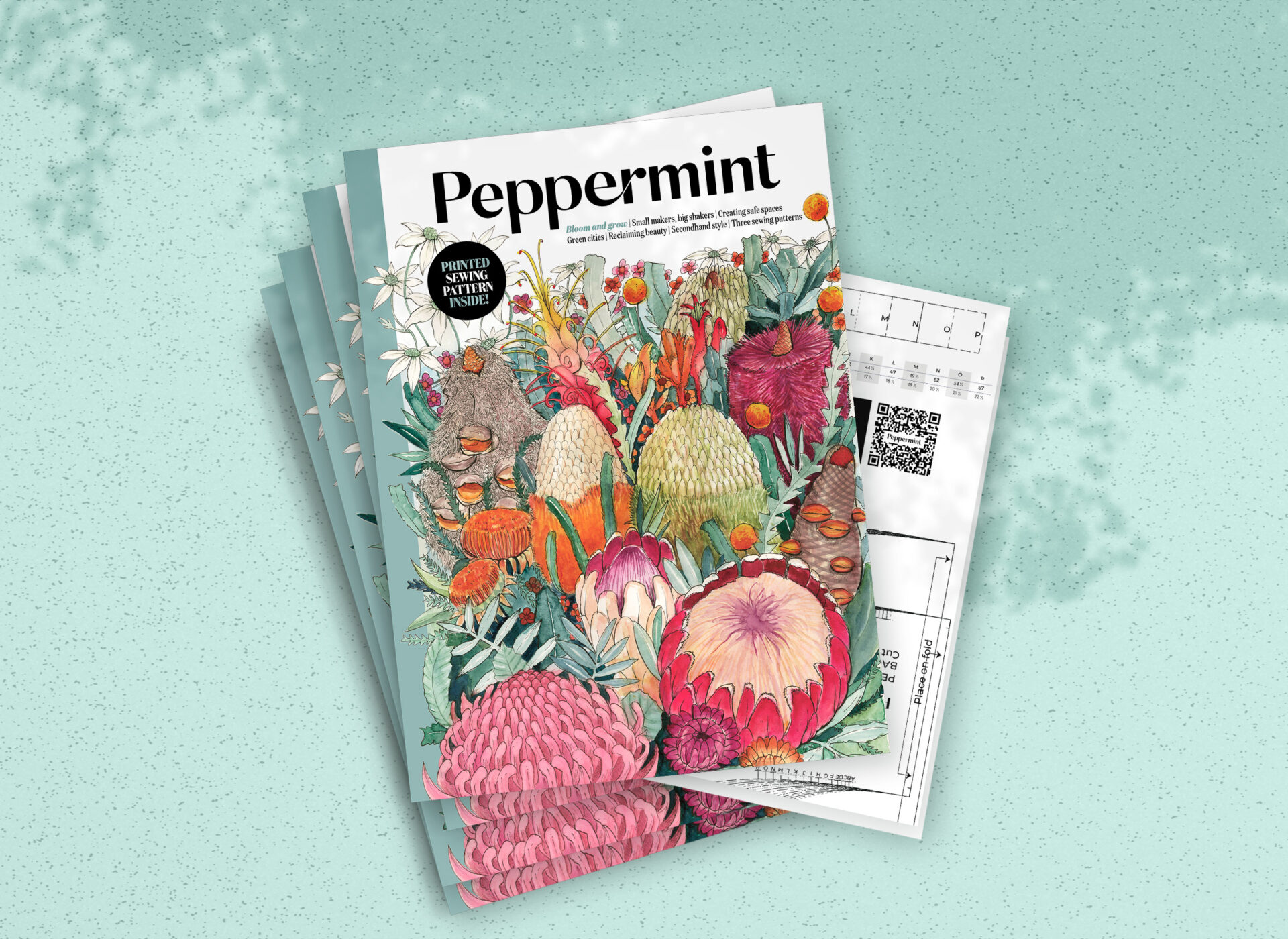
It’s Time to Bloom… Peppermint Issue 59 Has Entered the Room!
words LAUREN BAXTER, EDITOR
They say lightning never strikes twice. In reality, we know that not to be true. I wrote in Issue 58 about a previous ACL reconstruction. Six years later, I’m back in the same position, recovering from another surgery on the same knee.
For someone so obsessed with a quasi-ascendance of self, who prides herself on her ability to weather the storm and roll with the ebbs and flows of life, it’s been an emotionally fraught time reckoning with the unravelling of that. The recovery process is long, 12 months at least, and having been through it before, the realities of what life will look like – navigating accessibility, anxiety and a lack of autonomy; learning to let go of things I once held dear, of what I think defines me as a person – is an emotional gut punch.
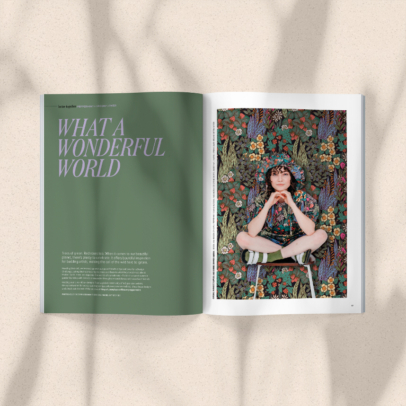
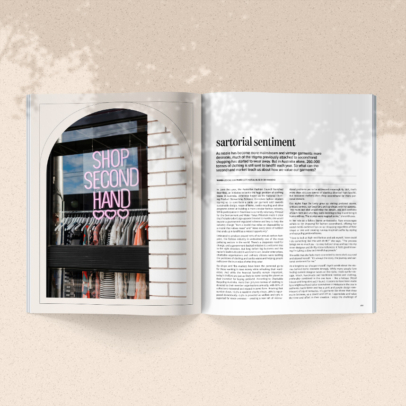

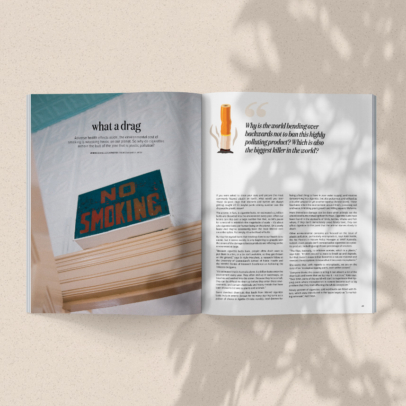
It’s easier to associate change with new beginnings – something I often associate with the season of spring. The limitless potential of a debut – visions of unfurling buds and baby chicks – can trick us into thinking value only lies in the visible. This time of year, as we begin to defrost and go searching for warmth, there’s a particular appeal to this point of view. But life, as always, seems to linger in the messy middle. And I think there’s more opportunity there – to change, adapt and grow – than we give it credit for.
But life, as always, seems to linger in the messy middle. And I think there’s more opportunity there – to change, adapt and grow – than we give it credit for.
As Issue 59 wings its way into the world, my hope is that, even if you’re in your own messy middle, it brings you the comfort of good stories and the excitement of fresh perspectives. Within its pages, you’ll find people making safe spaces, cities going green and a world of fashion that’s second to none. We even make time for a song (and peace with singing imperfectly).
I hope you enjoy the read, and that when it arrives, the issue serves as a reminder to go easy on yourself. The imperfection of growth is a notoriously tricky pill to swallow. Give yourself a break. And, when you are good and ready, bloom.
Happy reading,
Lauren x
Subscribe (and never miss an issue).
Take a peek inside this issue!
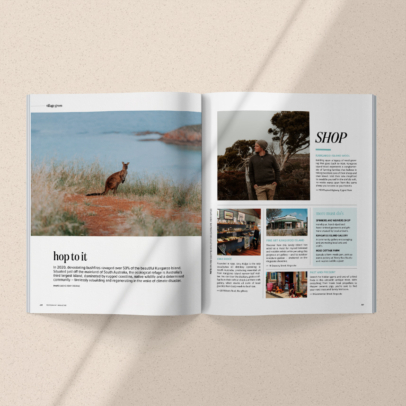
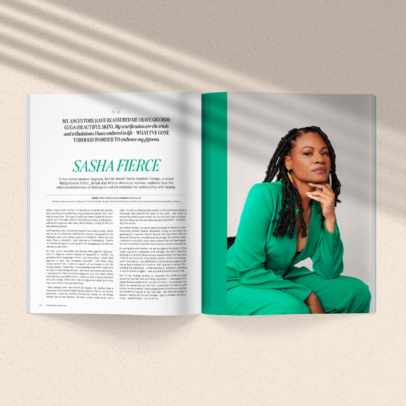
‘SUSTAINABILITY MAKES CENTS’ Our editor-in-chief ponders the intersection of the cost-of-living crisis and the climate. Words by Kelley Sheenan.
Buy local. Shop sustainably. Go straight to the growers. Give back. Seek out mindful makers. Remember your reusables. But at the same time – pay your ever-increasing rent or multiplying mortgage. Feed your family while grocery bills are skyrocketing. Keep your car on the road with soaring petrol costs. Do all of this with less time and less money, while also fighting for climate justice. Stressed yet? Yep, me too.
With the cost-of-living crisis dominating our thoughts (and bank balances), it’s understandable that sustainability may be taking a back seat. London-based purpose consultancy firm Revolt found a general shift in people’s focus towards political causes. Co-founder Alex Lewis told thedrum.com that “climate change dropped three places in the overall ranking, being replaced by issues that many might feel have more immediate and personal impacts: access to healthcare; unemployment and job security; and poverty, hunger and homelessness in my country”.
With the cost-of-living crisis dominating our thoughts (and bank balances), it’s understandable that sustainability may be taking a back seat.
This is completely understandable – focusing on the very real difficulties in front of you is far more warrantable than giving attention to what seems like an intangible future problem. These issues, however, are an intersectional dilemma; the cost of living is closely tied to the climate and the ensuing issues that result from rising temperatures. A paper published by Senior Public Health Registrar Claire Mulrenan, et al, states that “the cost-of-living crisis and climate change are inextricably linked public health crises. Any response which fails to consider their interconnectedness will further exacerbate climate change, harm health and widen inequalities; while disregarding some of the causes of the rising cost of living.”
‘SASHA FIERCE’ In her debut memoir ‘Gigorou’, former model Sasha Kutabah Sarago, a proud Wadjanbarra Yidinji, Jirrbal and African-American woman, explores how the interconnectedness of Aboriginal culture resolved her relationship with beauty. Words by Sasha Kutabah Sarago.
When I look in the mirror, I’m staring at a brand new person. Who she’ll be 18 months from now is anyone’s guess. But I can’t wait to meet her. This type of self-love wasn’t easily forthcoming for me. It’s tough, and it’s certainly not pretty, peeling yourself up from ground zero. But, phew! Mama, I made it! And I’m just getting started.
Self-loathing and contorting myself into what society wants me to be is a shitshow behind the scenes, compared to the highlight reel I, and others, post on Instagram. When you are more than a monolith, your journey is challenging. There’s no handbook given to young girls on navigating a world that refuses to see them.
There’s no handbook given to young girls on navigating a world that refuses to see them.
By now, you’re probably wondering what gigorou (jig-goo-roo) is. Gigorou means beauty or beautiful in Jirrbal, my grandmother’s language. Since I can remember, I didn’t feel gigorou; in fact, the complete opposite. I did what most young women do. I went in search of my beauty in all the wrong places. I read Cleo, Cosmopolitan and FHM magazines for tips on becoming thinner, desirable and more attractive. I watched the Miss Universe pageants and the video vixens from hip hop and R&B videos. I even turned to Steve Harvey’s Act Like a Lady, Think Like a Man to figure out what femininity was, and where I was going wrong.
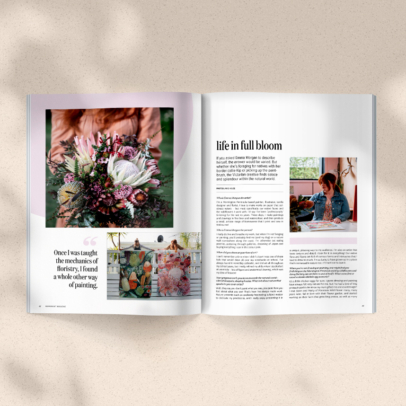
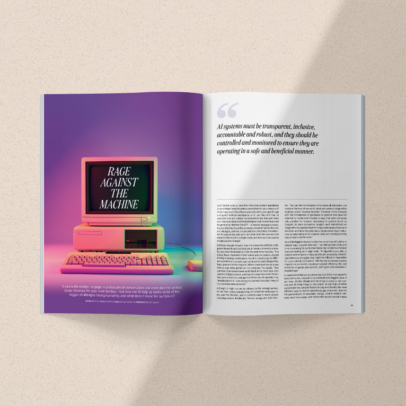
‘LIFE IN FULL BLOOM’ If you asked Emma Morgan to describe herself, the answer would be varied. But whether she’s foraging for natives with her border collie Kip or picking up the paintbrush, the Victorian creative finds solace and splendour within the natural world. Words by Emma Morgan.
Well, they say you don’t paint what you see, you paint how you feel about what you see! That’s how I’ve always made work. Nature presents such an endlessly fascinating subject matter to dedicate my practice to, and I really enjoy presenting it in a unique, pleasing way to my audience. I’m also an artist that loves texture and detail; I look for it in everything! Our native flora and fauna are full of curious forms and intricacies that I love to draw so much. I’m so lucky to have grown up in a place that’s immersed in nature too; it’s hard not to love it.
Well, they say you don’t paint what you see, you paint how you feel about what you see!
I guess drawing and painting have always felt very natural for me, but I’ve had a love of king protea in particular since my mum gifted me one as a teenager! I met Dawn and Marty of Peninsula Wild Flower many, many years later, fell in love with their flower garden, and started working on their farm that grew king protea, as well as many other species of protea, banksia and other Australian natives. Once I was taught the mechanics of floristry, I found a whole other way of painting – but my medium became flowers. It elevated the way I composed my artwork too because I think about it like a florist would and, consequently, I make my arrangements like an artist.
‘RAGE AGAINST THE MACHINE’ It can write essays, engage in philosophical conversation and even plan the perfect travel itinerary for your next holiday – but how can AI help us tackle some of the bigger challenges facing humanity, and what does it mean for our future? Words by Rebecca Jamieson Dwyer.
Ricardo Vinuesa, Associate Professor at the KTH Royal Institute of Technology and Lead Faculty at the KTH Climate Action Centre in Stockholm, Sweden, has found that AI can also support our understanding of climate change by modelling its impacts, improving the health of ecosystems, and supporting the creation of circular economies and smart cities. On the flip side, however, is the reality that AI needs to be powered by tremendous amounts of energy, which results in a huge carbon footprint: according to some estimates, the total electricity demand of information and communications technologies could require up to 20% of the global electricity demand by 2030 – up from around one percent in 2020. “Very large deep-learning models require massive computing centres to be trained, and these centres have very high electrical consumption,” Ricardo explains. But he adds that it’s possible to improve the training process so energy consumption is reduced, with techniques including “transfer learning and embedding physics and interpretability, which need to be an integral part of the usage of AI”.
Since anyone in the world with an internet connection can now harness AI tools to create vast amounts of text, computer code, videos and photorealistic images, there’s also the very real potential that AI will be used for nefarious purposes.
Since anyone in the world with an internet connection can now harness AI tools to create vast amounts of text, computer code, videos and photorealistic images, there’s also the very real potential that AI will be used for nefarious purposes. Many experts believe that the two most likely immediate threats are cyberattacks (criminals using AI to carry out scams and undermine cybersecurity measures), and the mass spreading of misinformation (individuals using AI to create false news stories and images, and then disseminating this content to specific groups via social media with the aim of influencing a political election or similar). If you’ve seen the AI-generated image of the Pope wearing a Balenciaga jacket that was widely shared on Instagram or any of the viral deepfake Tom Cruise or Keanu Reeves videos on TikTok, you’ll understand how easily we can be fooled, how trusting we are of the content we see in our social feeds, and how dangerous these tools could be in the wrong hands. And that’s without even diving into the murky waters of intellectual property infringement and usage rights.
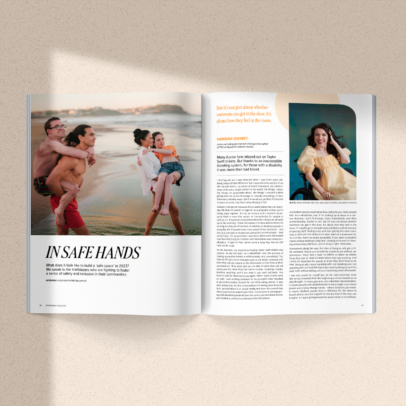
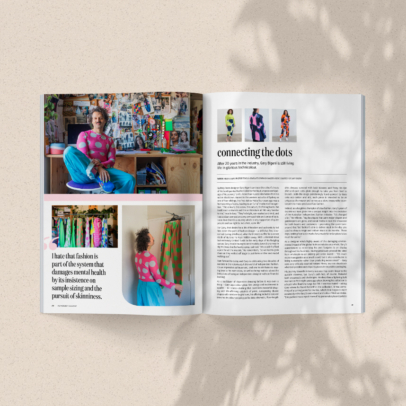
‘IN SAFE HANDS’ What does it look like to build a ‘safe space’ in 2023? We speak to the trailblazers who are fighting to foster a sense of safety and inclusion in their communities. Words by Hannah Diviney.
I first figured out I was disabled when I was three years old. Being aware of that difference has impacted every aspect of my life: my self-worth, my sense of what’s important, my relationships with every single person in my world, the things I value, the things I’m passionate about, the things I couldn’t bother giving even an ounce of energy to. Literally everything. In fact, there are probably ways I don’t know about yet that I’ll discover in years to come, but that’s what therapy is for!
Ableism is forgotten because it’s so easily baked into our everyday lives that it’s harder to register as a prejudice unless you’re being super vigilant. It’s not as obvious and it doesn’t necessarily flash in neon like racism or homophobia for people to pick up on. It’s present everywhere from the minute we all wake up in the morning. I think the reason it’s been able to thrive for so long is because of the lack of visibility of disabled people in everyday life. If people were more aware of our existence – not just as a concept or an abstract group but as real people – that would help. I’m 24 and when I was born, there were still beliefs that the best thing for children with disabilities was institutionalisation. In light of that, we’ve come a long way, but we still have so far to go.
‘JOINING THE DOTS’ After 20 years in the industry, Gary Bigeni is still living life in glorious technicolour. Words by Helen Dewar.
Sydney-born designer Gary Bigeni can trace the colourful roots of his hand-painted fashion label to the tiny European archipelago of his parents’ birth, more than 16,000 kilometres from his native Blacktown. Raised in the western suburbs of Sydney as one of four siblings, his first visit to Malta four years ago was a homecoming of sorts, leading to an “a-ha” moment of recognition. “The colours, the ocean, the culture, the fishing boats, the traditional costumes and the architecture all felt very familiar to me,” recalls Gary. “They’re bright, sun-soaked and vivid, and I see a clear connection to my own aesthetic and sense of style. I also love that it’s a country which is very supportive of queer people and our right to live a free, open life.”
I also love that it’s a country which is very supportive of queer people and our right to live a free, open life.
For Gary, that desire for a life of freedom and authenticity led him down the path of fashion design – a skill that first blossomed during childhood, when he’d create outfits for a secret stash of Barbies he kept hidden away. With unlimited drive but extremely limited funds in the early days of his fledgling career, Gary recalls having to send models down the runway in Big W shoes that he hastily spray-painted. “We couldn’t afford a pair for all the models,” he remembers, “so we had to grab them as they walked off stage to put them on the next model walking out.”


